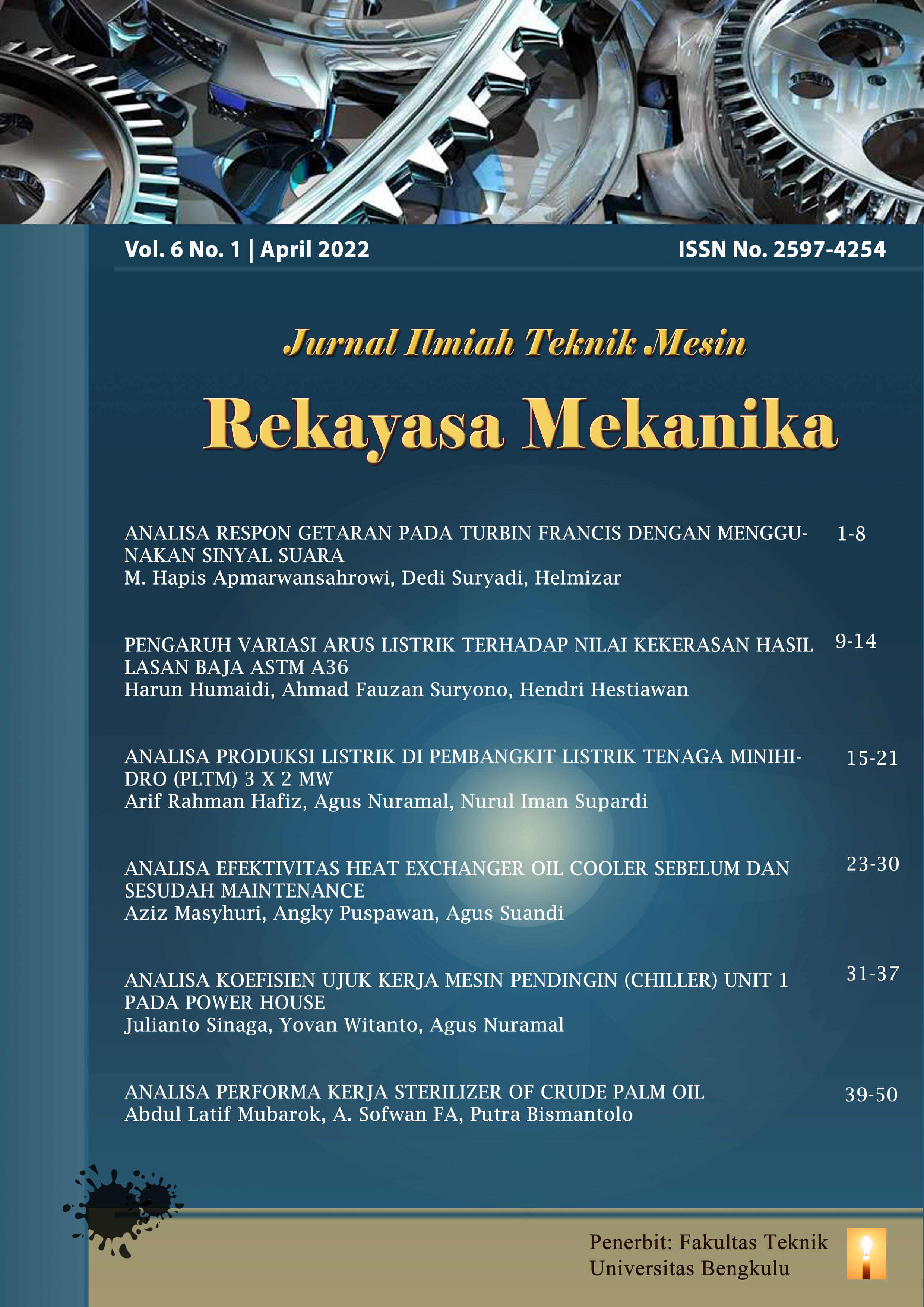Main Article Content
Abstract
Metal inert gas (MIG) welding is widely used whenever high and medium speed melting or joining of metals is required, MIG welding uses a DC current which is ignited between the worked part and the electrode wire, where this electrode functions simultaneously as a power carrier and source. metal filler, for MIG welding the gas is inert argon gas or a mixture of argon helium. In this study, the variables to be compared are the effect of variations in electric current and hardness values on MIG welding using CO2 gas. The purpose of this study was to analyze the effect of variations in electric current on the welding results, and to analyze the mechanical properties of the welding hardness value. The material used in this study as the workpiece is ASTM A36 steel with 6 pieces of length, width, and thickness dimensions of each 147 mm x 50 mm x 5 mm. The welding process is carried out by placing two workpieces parallel to the seam facing each other and a distance of 1 mm, with a current of 60 A, 100 A, and 150 A before full welding is carried out welding at the end of the workpiece so that there is no shift, then welding is carried out. full. The data collection method was carried out using the Hardness Tester hardness tester with the Brinell method at 5 test points in the weld area, the HAZ area, and the base metal area. The results showed that the welding results at a current of 60 A obtained uneven wavy, there were ridges at a current of 100 A the welding results were not too wavy, the ridges produced were slightly at a current of 150 A, the welding results were not neat in the middle of the weld area and there are pores. From the visual results of welding, the best welding results are at 100 A, the electric current used in Metal Inert Gas welding affects the weld results, the use of electric current that is close to the ASTM A36 steel welding standard (110 A – 130 A) will get better results. The best hardness value of this welding is at a current of 100 A, with almost the same average values, namely 96.52 HRB, 95.92 HRB, and 96.44 HRB.
Article Details

This work is licensed under a Creative Commons Attribution-ShareAlike 4.0 International License.

Ciptaan disebarluaskan di bawah Lisensi Creative Commons Atribusi-BerbagiSerupa 4.0 Internasional.
